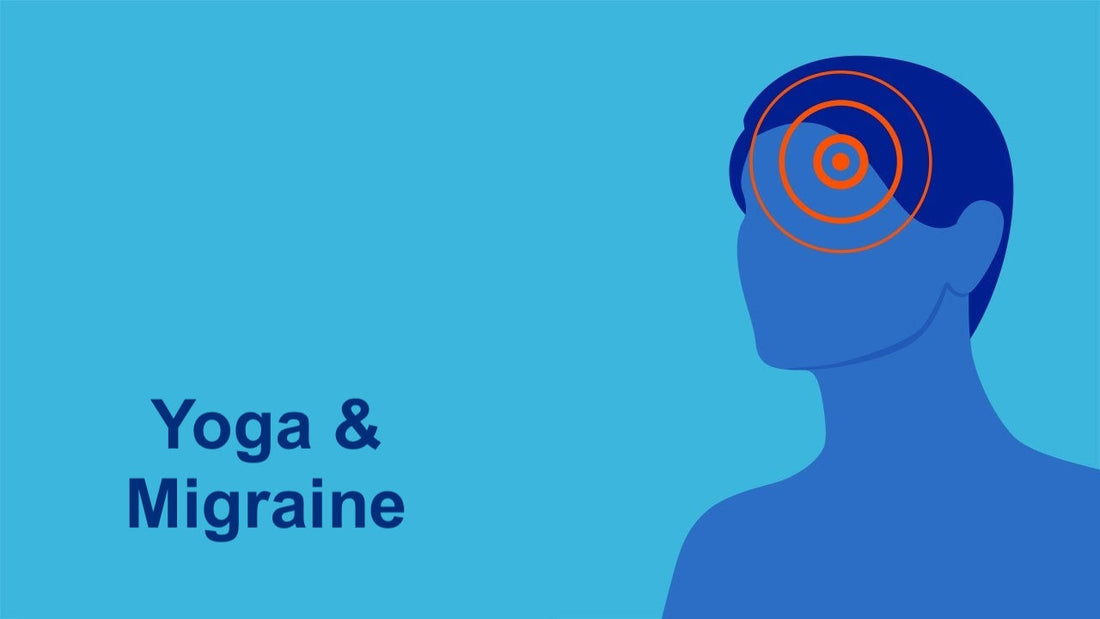
Does Yoga work for Migraine Relief?

Migraines are more than just headaches—they’re a complex neurological condition that can significantly impair one’s quality of life. Characterized by intense throbbing pain, often on one side of the head, along with symptoms such as nausea, light sensitivity, and visual disturbances, migraines affect millions worldwide.
While medication remains a primary treatment approach, there’s growing interest in holistic practices like yoga for managing migraines naturally. Research increasingly suggests that yoga can serve as a powerful complementary therapy.
Understanding the Connection: How Yoga Helps Migraines
Yoga is a mind-body discipline that combines physical postures (asanas), breathing techniques (pranayama), and meditation. These practices collectively work to balance the nervous system, reduce stress—a major migraine trigger—and improve overall physical and mental health. Here are the key ways yoga can help:
1. Reduces Stress and Cortisol Levels
Chronic stress is a well-known trigger for migraines. Yoga lowers the body’s stress response by decreasing levels of cortisol, the stress hormone. Regular practice helps calm the sympathetic nervous system (fight or flight response) and activates the parasympathetic system (rest and digest), reducing both the frequency and intensity of migraines.
2. Improves Blood Circulation and Oxygen Flow
Certain yoga postures enhance circulation to the brain and neck area, improving oxygen delivery and reducing the likelihood of tension build-up, which can lead to migraines. Poses such as legs-up-the-wall (Viparita Karani) or child’s pose (Balasana) are particularly effective.
3. Balances Hormonal and Nervous System Function
For people whose migraines are triggered by hormonal changes or neurological imbalances, yoga can help regulate endocrine and nervous system function through postures that stimulate the pituitary and pineal glands, as well as calming the vagus nerve.
4. Promotes Better Sleep
Poor sleep is another major contributor to migraine attacks. Yoga and pranayama improve sleep quality by calming the mind and releasing physical tension, especially when practiced regularly in the evenings.
What the Research Says
Several studies support the role of yoga in migraine management:
- A 2014 study published in Headache: The Journal of Head and Face Pain found that patients who practiced yoga for three months had significantly fewer migraine attacks and reduced intensity compared to a control group receiving only conventional treatment.
- Another study in Evidence-Based Complementary and Alternative Medicine (2015) showed that yoga reduced migraine frequency and pain, and also improved anxiety and depression scores in patients.
- A 2020 randomized controlled trial in Neurology reported that combining yoga with standard medication was more effective than medication alone in reducing migraine frequency, severity, and pill dependency.
Best Yoga Practices for Migraine Relief
Here are some gentle and restorative yoga practices known to support migraine management:
1. Recommended Asanas (Postures):
- Child’s Pose – Relaxes the neck and spine

-
Legs-Up-The-Wall Pose – Promotes circulation and relaxation

- Downward Dog – Increases blood flow to the brain

- Bridge Pose – Supports hormone balance and spinal alignment

2. Breathing Techniques (Pranayama):
- Anulom Vilom (Alternate Nostril Breathing) – Balances both hemispheres of the brain
- Bhramari (Humming Bee Breath) – Soothes the nervous system
- Sheetali (Cooling Breath) – Helps reduce internal heat and calm the mind

3. Meditation and Mindfulness:
Mindful meditation, especially focusing on breath awareness or body scans, helps build resilience to pain and lowers anxiety associated with chronic migraine conditions.
When to Avoid Yoga During Migraines
While yoga can be highly beneficial, it’s important to avoid certain movements during an active migraine attack—especially inversions or strenuous postures that increase pressure in the head or require sudden changes in position. Instead, opt for quiet, restorative poses in a dark, cool environment, or simply practice deep breathing.
Final Thoughts
Yoga is not a quick fix, but with regular and mindful practice, it offers a sustainable and drug-free way to manage migraines. It addresses the condition holistically—physically, mentally, and emotionally—making it an ideal complement to medical treatment.
As always, individuals should consult with their healthcare provider before beginning any new therapy, especially if their migraines are severe or linked to other health conditions. When practiced correctly and consistently, yoga can become a powerful ally in the journey toward a migraine-free life.
Learn More About Zanskar Health
If you have joint or muscle pain that makes it hard to move, Zanskar offers the most advanced full stack pain relief solutions for you.
Now available to purchase, Zanskar® Advanced Pain Healing Cream has a unique formulation of natural ingredients like Arnica, Vitamin B6, MSM and Capsaicin, which is trusted by over 20L+ pain sufferers globally. It provides lasting relief from muscle and joint discomfort that you can feel good about. Get your fix before stocks run out - buy now.
You can also gain access to therapeutic exercises and stretches for your condition by downloading the Zanskar Health physiotherapy mobile app. Additionally, you’ll have a personal care team to guide, support, and tailor our program to you, including behavioral and nutritional coaching.
Download our mobile app here 👉 download and track your exercise streak.
Medical Review: This article is written and medically reviewed by Dr Nishtha Mittal (Senior Health Content Editor at Zanskar Health). This article and its contents are provided for educational and informational purposes only and do not constitute medical advice or professional services specific to you or your medical condition.







